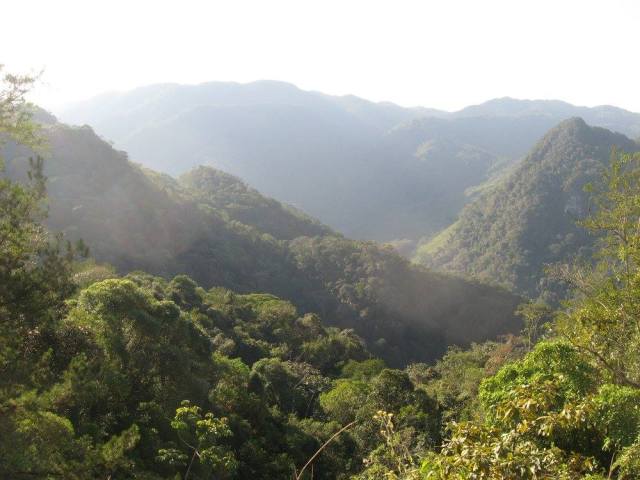
Brazil – Geoff Muldaur
The pictures of Brazil I have posted so far have been from our trip four years ago. Today for the first time I post pictures from our current trip. Our first stop in Brazil after touching down in Campinas (Sao Paulo) was State Park of PETAR (Parque Estadual Turístico do Alto Ribeira), in the south of Sao Paulo State. It boasts one of the largest areas of original Mata Atlantica rainforest (the pre-Columbian Atlantic coast rainforest that had been largely decimated by development). PETAR State Park is most famous for its many caves. Below is a picture of Casa de Pedra, a Petar cave with a nearly record big opening of about 18o meters.

You however need about a day’s hike into the forest to reach Casa de Pedra. More humble tourists that we are, we hired a guide to take us into those three caves most accessible to day trippers. They are pretty impressive in their own right. The first one, Santana, goes on for over 12 km. 800 meters worth is deemed safe for tourists and their guides. And that alone is a lot of cave to explore, with too many fabulous formations of stalactites and stalagmites to contain in even this blog post, and I’ll share plenty.
 To the right, that’s Ed and me and our head protection (it’s easy to bump your head making your way through and past the tight corners, low ceilings and odd protrusions of a cave system). Below is the entrance to the Santana cave. It looks rather modest for what would wind up being an elaborate, impressive 12 km cave system. Turns out this entrance was blasted open by dynamite a hundred years ago. Originally the opening was much smaller, just enough for the water to pour out and make a strange grumbling sound, which is why it initially was called the Snoring Cave.
To the right, that’s Ed and me and our head protection (it’s easy to bump your head making your way through and past the tight corners, low ceilings and odd protrusions of a cave system). Below is the entrance to the Santana cave. It looks rather modest for what would wind up being an elaborate, impressive 12 km cave system. Turns out this entrance was blasted open by dynamite a hundred years ago. Originally the opening was much smaller, just enough for the water to pour out and make a strange grumbling sound, which is why it initially was called the Snoring Cave.

The opening of the Santana cave, as seen from within:

Taking pictures inside the caves with just my regular old canon automatic, there is the decision of whether to use flash photography or try capturing the image in the low light available from the helmet headlights. Below you can see the difference of the same section of the cave being photographed in the “natural” light of the head lamps and with the camera’s flash. Although the flash photography for the most part gives much more detail, it can have a flattening effect, and it doesn’t represent the actual experience of being in the darkness of the caves, guided only by the lights from our helmet lamps.


I will include pictures taken both ways. So you can share the experience of being in the dark cave system, spookily illuminated by limited light, as well as revel in the details of some of the fantastic calcium carbonate deposit formations we encountered.
All this talk of camera usage brings me to our Brazilian musical number of today: Desafinado. Why? Because of this lyric of course:
Fotografei você na minha Rolleiflex
(I took a picture of you with my Rolleiflex)
Desafinado – Antonio Carlos Jobim
Desafinado is actually less about cameras and more about music. Desafinado means “out of tune” and the lyrics describe a lover’s disdain for the narrator’s singing. The lyrics’ dissection of the relationship is actually a sly defense of bossa nova itself, the musical style which was just being introduced at the time of the song’s writing. Desafinado may now easily be not only the most famous bossa nova tune but also the song that more than any other defines the bossa nova style.
Okay, back into the caves:


 Above and beside you can see some of the walkways we took to get through the cave system. Ed says “I love about Brazil that you can do things here that would be considered totally unsafe for tourists in America”.
Above and beside you can see some of the walkways we took to get through the cave system. Ed says “I love about Brazil that you can do things here that would be considered totally unsafe for tourists in America”.

 There are animals that live exclusively in the caves, like this spider.
There are animals that live exclusively in the caves, like this spider.
Below note the glittering of the minerals on the cave wall, like a star filled night.

Time for some stalactites, in columns and curtains:


 Ed is looking at a rock formation which is called the horse’s head for obvious reasons.
Ed is looking at a rock formation which is called the horse’s head for obvious reasons.


Above and below two shots of the same formation, a stalactite and a stalagmite fusion.

I think we need some cave music. You didn’t know that was a thing, cave music? Well, maybe it isn’t really, but there is plenty of cave music in the movie “Lord of the Rings: Fellowship of the Ring”, when our heroes enter the mines of Moria:
Moria – Howard Shore

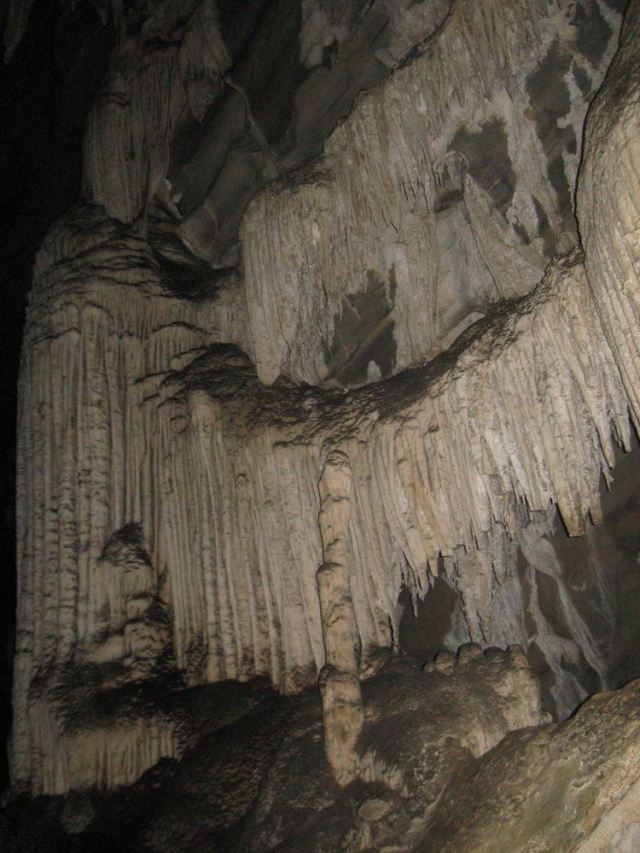


Speaking of music, our guide Mauricio “played” these stalactites like they were an upright xylophone.

More cave music? Let’s hear how things get really dramatic in the mines of Moria. Luckily Ed and I didn’t encounter a Balrog, or have to face (spoiler alert) the tragic fall of one of our own down an endless abyss.
Khazad-Dûm – Howard Shore
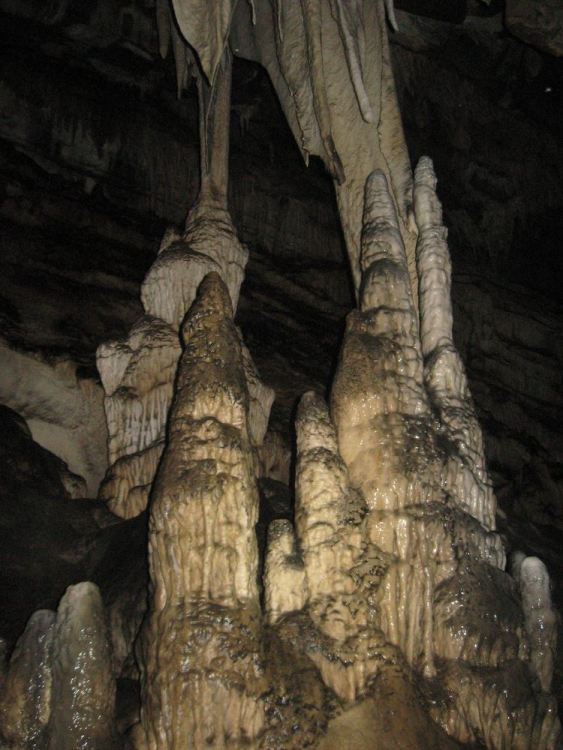

The negative space in the formation below looks like a heart. The formation itself also looks like a bottle opener. So Mauricio joked it is the bottle opener to ones heart.



Below you can see how water drops form at the bottom of the stalactites, coming through openings in the middle like through a straw, laying down more calcium carbonate deposits for future growth.
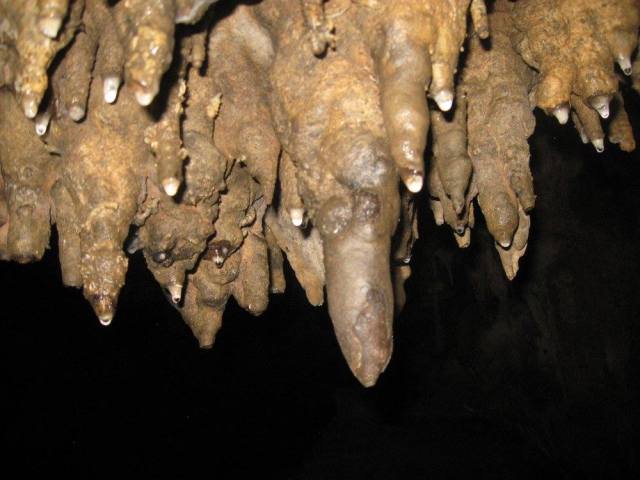

It takes ten years for a stalagmite to grow one centimeter. This stalagmite is about 10 meters high! Do the math!
10 000 years!


 This “elephant foot” was created when the river, which molded the column and its base over millennia, shifted, then carved out a path under the “foot” at a later time.
This “elephant foot” was created when the river, which molded the column and its base over millennia, shifted, then carved out a path under the “foot” at a later time.
The whole valley of PETAR Park, in the Ribeiro River Valley, was carved out by the Betari river. These mountains (as well as the caves and caverns within them) were formed by the flow of water over thousands and thousands of years.

Our second cave is called the Morro Preto. It has a wide, theatrical opening.


 Mauricio showed us where pre-historic human communities maintained their cave fires, still visibly imprinted in the ground, and discarded the shells of snails they feasted on.
Mauricio showed us where pre-historic human communities maintained their cave fires, still visibly imprinted in the ground, and discarded the shells of snails they feasted on.

Morro Preto is a literally cavernous cave, wide open, cathedral high. Without special lighting it is hard to photographically give a sense of it. Mauricio told us that weddings and even concerts have been conducted in Morro Preto.


 A black cave frog, to the right.
A black cave frog, to the right.
Remember Ed’s quip about safety in Brazil relative to the more cosseted (for tourists) United States? Those steep wet ladders (see below) down into the rocky dark make for a fine example:


Another cave dweller.
Our final cave of the day, the Couto, is by definition a cavern, in that one can travel from one opening in the mountain through to another opening on the other side. For most of the journey we traveled beside the river still carving out this space.

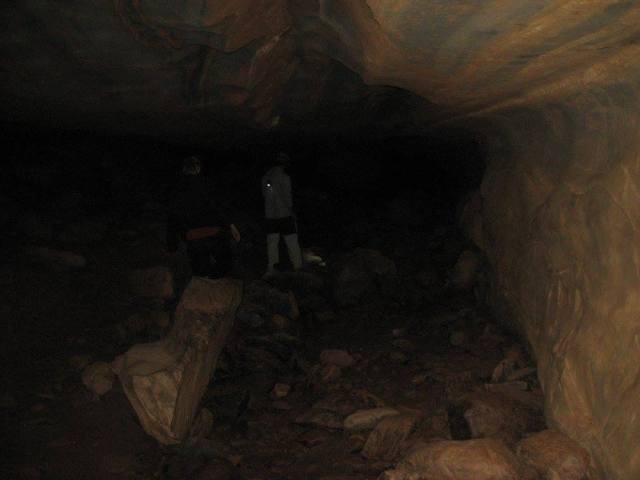


 These plants are growing 100 meters deep inside the otherwise barren cavern, thanks to an opportunistic shaft of light making its way through a tiny crack above.
These plants are growing 100 meters deep inside the otherwise barren cavern, thanks to an opportunistic shaft of light making its way through a tiny crack above.
Alright, there is cave music I can share that is not from Middle Earth. How about the Cave of Wonders from the Disney animated classic Aladdin? You will note however that after the music expresses the wonder of the cave it focuses more on the frenetic action happening inside the cave. Something about magical mayhem and flying carpets, if memory serves.
The Cave of Wonders – Alan Mencken


